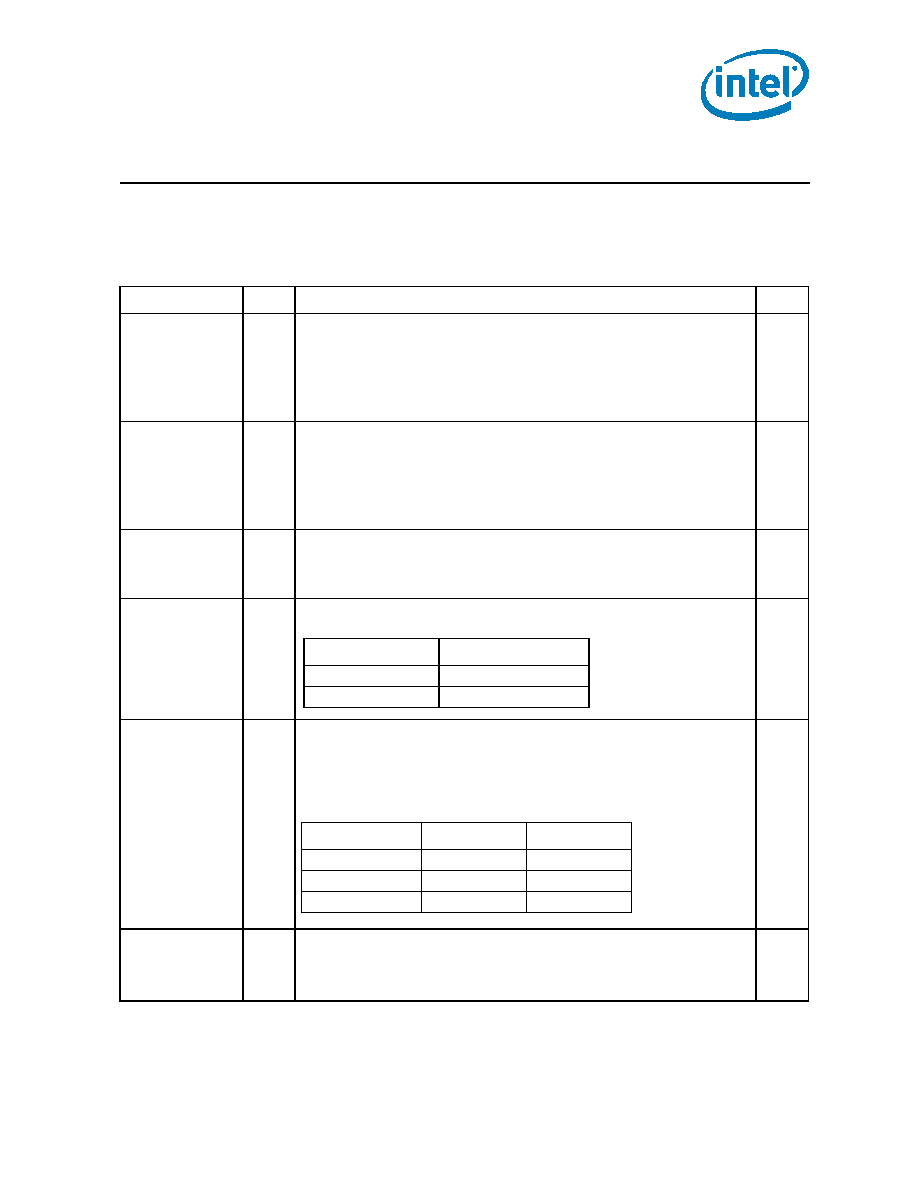- 您現(xiàn)在的位置:買賣IC網 > PDF目錄298893 > BX805555080P (INTEL CORP) 64-BIT, MICROPROCESSOR, BGA771 PDF資料下載
參數(shù)資料
| 型號: | BX805555080P |
| 廠商: | INTEL CORP |
| 元件分類: | 微控制器/微處理器 |
| 英文描述: | 64-BIT, MICROPROCESSOR, BGA771 |
| 封裝: | LGA-771 |
| 文件頁數(shù): | 63/104頁 |
| 文件大?。?/td> | 3690K |
| 代理商: | BX805555080P |
第1頁第2頁第3頁第4頁第5頁第6頁第7頁第8頁第9頁第10頁第11頁第12頁第13頁第14頁第15頁第16頁第17頁第18頁第19頁第20頁第21頁第22頁第23頁第24頁第25頁第26頁第27頁第28頁第29頁第30頁第31頁第32頁第33頁第34頁第35頁第36頁第37頁第38頁第39頁第40頁第41頁第42頁第43頁第44頁第45頁第46頁第47頁第48頁第49頁第50頁第51頁第52頁第53頁第54頁第55頁第56頁第57頁第58頁第59頁第60頁第61頁第62頁當前第63頁第64頁第65頁第66頁第67頁第68頁第69頁第70頁第71頁第72頁第73頁第74頁第75頁第76頁第77頁第78頁第79頁第80頁第81頁第82頁第83頁第84頁第85頁第86頁第87頁第88頁第89頁第90頁第91頁第92頁第93頁第94頁第95頁第96頁第97頁第98頁第99頁第100頁第101頁第102頁第103頁第104頁

Dual-Core Intel Xeon Processor 5000 Series Datasheet
61
Signal Definitions
5
Signal Definitions
5.1
Signal Definitions
Table 5-1.
Signal Definitions (Sheet 1 of 8)
Name
Type
Description
Notes
A[35:3]#
I/O
A[35:3]# (Address) define a 236-byte physical memory address space. In sub-phase
1 of the address phase, these signals transmit the address of a transaction. In sub-
phase 2, these signals transmit transaction type information. These signals must
connect the appropriate pins of all agents on the FSB. A[35:3]# are protected by
parity signals AP[1:0]#. A[35:3]# are source synchronous signals and are latched
into the receiving buffers by ADSTB[1:0]#.
On the active-to-inactive transition of RESET#, the processors sample a subset of the
A[35:3]# lands to determine their power-on configuration. See Section 7.1.
3
A20M#
I
If A20M# (Address-20 Mask) is asserted, the processor masks physical address bit
20 (A20#) before looking up a line in any internal cache and before driving a read/
write transaction on the bus. Asserting A20M# emulates the 8086 processor's
address wrap-around at the 1 MB boundary. Assertion of A20M# is only supported in
real mode.
A20M# is an asynchronous signal. However, to ensure recognition of this signal
following an I/O write instruction, it must be valid along with the TRDY# assertion of
the corresponding I/O write bus transaction.
2
ADS#
I/O
ADS# (Address Strobe) is asserted to indicate the validity of the transaction address
on the A[35:3]# lands. All bus agents observe the ADS# activation to begin parity
checking, protocol checking, address decode, internal snoop, or deferred reply ID
match operations associated with the new transaction. This signal must connect the
appropriate pins on all Dual-Core Intel Xeon Processor 5000 series FSB agents.
3
ADSTB[1:0]#
I/O
Address strobes are used to latch A[35:3]# and REQ[4:0]# on their rising and falling
edge. Strobes are associated with signals as shown below.
3
AP[1:0]#
I/O
AP[1:0]# (Address Parity) are driven by the request initiator along with ADS#,
A[35:3]#, and the transaction type on the REQ[4:0]# signals. A correct parity signal
is high if an even number of covered signals are low and low if an odd number of
covered signals are low. This allows parity to be high when all the covered signals are
high. AP[1:0]# should connect the appropriate pins of all Dual-Core Intel Xeon
Processor 5000 series FSB agents. The following table defines the coverage model of
these signals.
3
BCLK[1:0]
I
The differential bus clock pair BCLK[1:0] (Bus Clock) determines the FSB frequency.
All processor FSB agents must receive these signals to drive their outputs and latch
their inputs.
All external timing parameters are specified with respect to the rising edge of BCLK0
crossing VCROSS.
3
Signals
Associated Strobes
REQ[4:0], A[16:3]#
ADSTB0#
A[35:17]#
ADSTB1#
Request Signals
Subphase 1
Subphase 2
A[35:24]#
AP0#
AP1#
A[23:3]#
AP1#
AP0#
REQ[4:0]#
AP1#
AP0#
相關PDF資料 |
PDF描述 |
|---|---|
| BX805555080A | 64-BIT, MICROPROCESSOR, BGA771 |
| BX805555030P | 64-BIT, MICROPROCESSOR, BGA771 |
| BX80557E2140 | MICROPROCESSOR, PBGA775 |
| BXM80526B600128 | 64-BIT, 600 MHz, MICROPROCESSOR, PBGA495 |
| BXM80526B700128 | 64-BIT, 700 MHz, MICROPROCESSOR, CPGA495 |
相關代理商/技術參數(shù) |
參數(shù)描述 |
|---|---|
| BX805565120P S L9RY | 制造商:Intel 功能描述:MPU Xeon 制造商:Intel 功能描述:MPU Xeon? Processor 5120 RISC 64-Bit 65nm 1.86GHz 771-Pin LGA Box |
| BX805565130A S LAGC | 制造商:Intel 功能描述:5100 MEMORY CONTROLLER HUB CHIPSET |
| BX805565140P S LABN | 制造商:Intel 功能描述:MPU Xeon 制造商:Intel 功能描述:MPU Xeon? Processor 5140 RISC 64-Bit 65nm 2.33GHz 1.35V/1.5V 771-Pin FCLGA6 Box |
| BX805565148A S LABH | 制造商:Intel 功能描述:MPU Xeon |
| BX805565160A S L9RT | 制造商:Intel 功能描述:MPU Xeon? Processor 5160 RISC 64-Bit 65nm 3GHz 1.35V/1.5V 771-Pin FCLGA6 Box |
發(fā)布緊急采購,3分鐘左右您將得到回復。